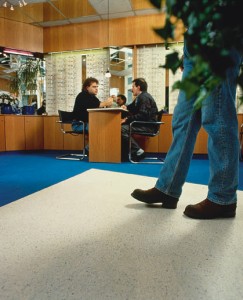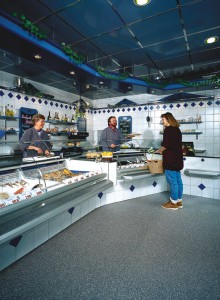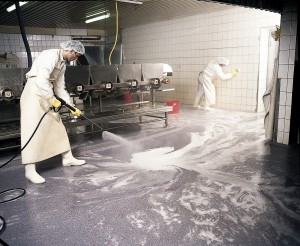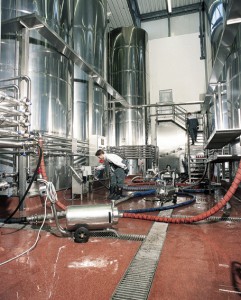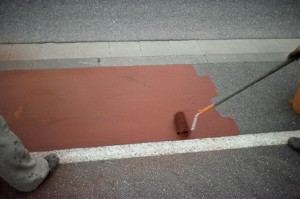Archive for October, 2010
So Many Kinds Of Liquid Floor Refinishing, So Which Is Supreme?
Liquid floor refinishing is a wise choice, but what is the foremost option?
If you are seeking commercial liquid floor refinishing, it’s no wonder that you are confused. Everyone is trying to sell you one thing or another, but you may have special requirements for your liquid floor refinishing, and therefore do not know which is going to be best for your floor.
After all you will run into liquid floor coatings, polyurethane (PU) floor coatings, resin based liquid floor refinishing, polymer modified cementitious floor coatings, and seamless coatings among others, all of which will give you varying failure analysis concrete moisture and alkalinity testing results, which will confuse you even more!
So yes, what you probably need is a seamless flooring system, and one that will not wear out on you, as well as being corrosion free and also is a reactive resinous floor system. Thus, you are looking for liquid floor refinishing that contains Methyl Methacrylate or, as it is known in the flooring industry MMA.
However, if you do your research on various MMA seamless flooring systems, you will find that not all MMA systems are alike. You see only Silikal liquid floor refinishing actually uses an enhanced MMA. Whereas MMA liquid floor refinishing will give you a complete seal, it will not be wear free, and will probably have to be refinished again and again. Silikal liquid floor refinishing will give you all that you seek, as well as not need to be refinished again. What’s more is that Silikal liquid floor refinishing will set up permanently in just one hour, thus it requires no more down time than that for your business!
Flooring For Wet Areas
When talking about flooring for wet areas you are talking about a floor with many demands
It stands to reason that flooring for wet areas is going to be different than for dry areas. For instance if you have hydrotherapy areas, changing rooms, an indoor pool, or walk in showers, you will definitely need special flooring for wet areas so that those who are barefoot do not slip and fall. But there are other areas too that call for specific treatment for those areas that are constantly wet.
Commercial laundries, for instance will constantly have wet floors, as will commercial kitchens. You will definitely need flooring for wet areas around public saunas, for example. Other illustrations include chicken processing plants, dairies, commercial aquariums, abattoirs, and of course food-processing plants or even bakeries.
Thus when you need flooring for wet areas such as those mentioned it behooves the modern commercial consumer to use a product like Silikal, which has been especially created for flooring for wet areas, thus preventing spills and other calamities that might happen because the floor is wet. Silikal creates a non porous as well as non-slip flooring because it is a reactive resin component.
Thus not only is it perfect for flooring for wet areas, but it is also impervious to chemical spills, a very important consideration in a chemistry laboratory. As a food grade flooring, Silikal also will not allow any water, dirt, or bacteria to introduce itself in your flooring, due to its non-porous nature.
Many of our commercial users state that it is the perfect flooring for use in wet areas, but they are especially thrilled with the results around their drain areas, that used to present problems around those constantly wet areas. You definitely can expect more from you flooring for wet areas if you use Silikal.
Top Coat Cement Choices: Exploring the Options as well as the Differences.
What is the right choice to top coat cement with and why is it important to choose the right one?
There are many different kinds of sealers and floor systems that act as a top coat cement. For instance there are various kinds of waxes, urethanes, and epoxies. There are also various categories of acrylics certainly, but what Silikal uses as a top coat cement is enhanced MMA.
There are of course, problems with other kinds of top coat cement. Take for instance waxes. Waxes will obviously coat cement, and you can use food grade waxes if that’s important to you. The problem is that once applied, it will need to be buffed, usually machine buffed, thus you will have down time and the cost of that person to buff the waxed top coat cement. Finally, the process will have to be repeated approximately once a month to maintain the proper shine on the cement.
Urethanes used as a top coat cement must be applied in temperatures between 50° F and 85° F, and priming is obligatory in order to prevent blistering as well as outgassing. Full chemical resistance will be available only 7 days after application, full service within 48 hours after application, light wheel traffic within 24 hours after application, and foot traffic within 8 hours after application.
Epoxies used as a top coat cement also present their own problems, especially in preparation which must be impeccable in addition to a possibility of surface salts or ions in the concrete itself, water flow before, during or after application, vapor pressure problems, or if applied to either very old or very new concrete. Creating the perfect mix ration is sometimes next to impossible, also resulting in problems in the future with epoxies.
When Silikal is used as a top coat cement however, it is dry to any use, traffic, full chemical resistance, or water resistance within one hour of application. There is no blistering, or outgassing, and it need not be repeated, nor will there be leaching of any surface salts or ions in the concrete itself, besides being totally slip proof.

